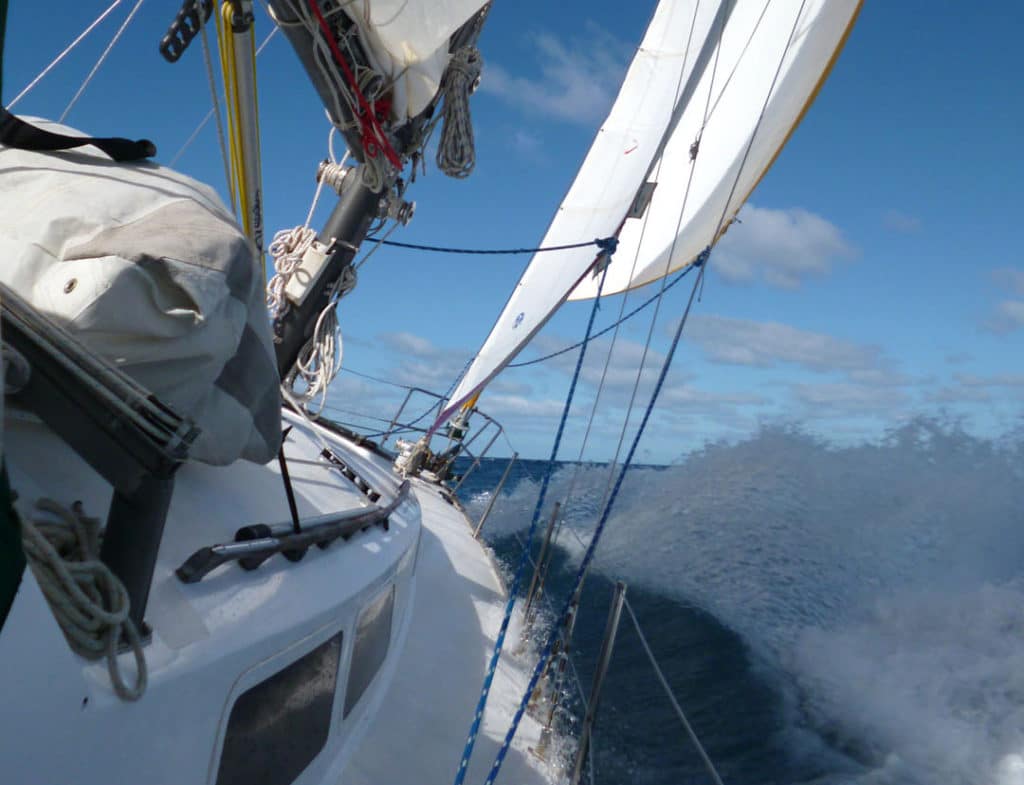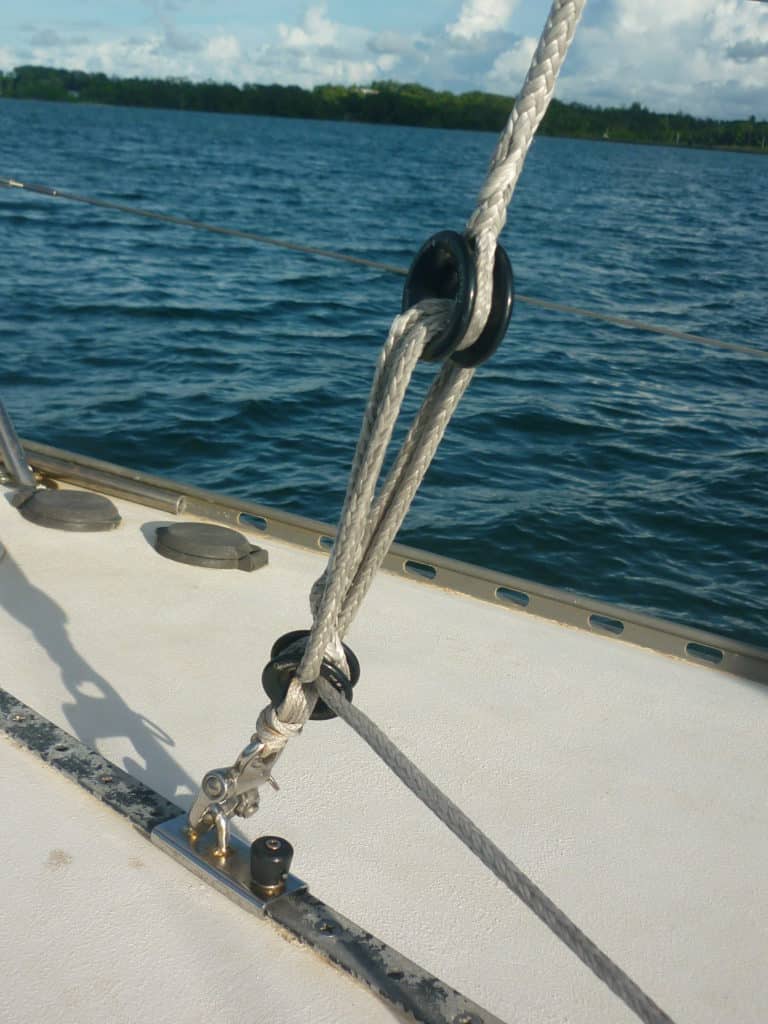
Sailors have long embraced cutting-edge technology to voyage farther and faster. From Capt. Cook using Harrison’s chronometer to determine longitude — and thereby his ship’s position — to carbon-fiber wings and foiling catamarans, innovations sometimes take a few years to trickle down to the realm of affordability for the average cruising sailor, but they are worth the wait. One such breakthrough we’ve embraced on our Newport 41, Kate, is Dyneema lines.
Made available to the public in the 1990s, Dyneema was developed and tested for several decades before making its wider debut. Used for everything from space tethers to bulletproof armor to fishing line, Dyneema has earned its reputation as one of the world’s strongest fibers. When tested, Dyneema displays strength-to-weight ratios eight to 15 times that of steel wire, the variation depending on the construction of the wire. Originally quite expensive, Dyneema is now considered an economical alternative for various applications on board the typical cruising sailboat.
Dyneema and similar products later released under other names, such as Spectra, are examples of ultrahigh-molecular-weight polyethylene, or UHMWP. These fibers display several unique characteristics. They are lightweight and fire-resistant, have low moisture absorption, and they float. They are also self-lubricating and low-stretch, making Dyneema ideal for activities such as kiteboarding, mountain climbing, archery, skydiving and sailing.
Recently, with potentially more windward passages ahead of us, we decided to install a removable inner forestay and running backstays on Kate. The boat was originally sloop-rigged, but the hardware for an optional inner forestay had been installed both on the mast and the deck during the build. Since our boat is older, we could not order the rigging cut-to-fit direct from the factory. And being in the middle of the South Pacific, we had limited access to a reliable rigger. So instead of running traditional wire rigging, we decided to try Dyneema. Not only would it avoid the cost of shipping stainless wire to the island, but it also meant that we could do the installation ourselves.
Dyneema line is available with a traditional polyester braided cover or as a bare, hollow-core, 12-braid line. The covered Dyneema, often referred to as Dyneema- cored polyline, is typically used for sheets and halyards; the outer sheath provides more traction on winches and a better grip when handled. We planned on using a standard hank-on staysail, however, so we opted for the hollow-core line, using the slipperiness of the Dyneema fibers to our advantage.
It would have been feasible to use small-diameter Dyneema line, as its breaking strength would have been sufficient for our application. However, we were constrained by the size of the hanks and other hardware needed to complete the project. We found that 8-millimeter line was more than strong enough and best suited the hardware used.
To attach the aluminum frictionless rings that we used to tension the forestay and running backstays (see “Tension Tamer,” p. 108), as well as the stainless thimbles used at the attachment tangs on the mast, we used simple locked Brummel splices.
The process of splicing hollow-braid line reminds me of a magic trick; simple steps are meticulously done and undone, and then suddenly the eye appears. But there is no sleight of hand involved, just smart rope work. The final step is to feed the tail of the splice into the hollow core of the standing line. This makes the splice work like a magician’s finger trap: The harder the standing line is pulled, the more tightly it constricts around the tail, and therefore the more secure the eye becomes.
Due to its fibrous construction and slippery feeling, Dyneema can be finicky to work with. The trick to getting a neat-looking splice is to be extra careful when feeding the fid through the braid. Unlike conventional line, Dyneema fibers tend to separate and snag on even the dullest point. Yet the steps to making an eye splice are simple enough for the average DIY sailor; all that is needed is a marker, a sharp blade, some tape, a set of fids and some patience.
This method of creating an eye splice can be used to capture hardware such as a ring or thimble, but it can also be used to attach a shackle, carabiner or other quick-release hardware. The possibilities for using Dyneema on board are now not only affordable, but endless.
Find out how to splice a Brumel Splice here.

Tension Tamer
When in use, both the inner forestay and the running backstays need to be tensioned. With wire rigging, this is accomplished with a turnbuckle or Highfield lever. When tensioning line, usually a series of blocks are used. We discovered a third option while researching how to install our new soft rigging: anodized aluminum frictionless rings.
Frictionless rings are now manufactured by several companies and come in various sizes. They are a simple but elegant solution to the problem of tensioning Dyneema lines. One ring is attached with a splice to the deck end of the forestay; a second, smaller ring is attached to the deck and has a length of Dyneema that is spliced around its circumference. This line is passed through the middle of the larger ring and back through the middle of the small ring; the number of times it threads through the ring determines the purchase. Dyneema’s smoothness and the rings’ rounded center edge provide a frictionless solution.
When it’s time to tension the inner forestay, we lash the Dyneema line in place and then lead it back to a cockpit winch. Our running backstays are connected to the toerail near the transom using snatch blocks so we can remove them quickly when tacking or jibing. These are also tensioned by a winch.
Heather Francis is originally from Nova Scotia, Canada. For more than a decade she has traveled the world living and working on boats. In 2008 she and her Aussie partner, Steve, bought their Newport 41, Kate, and have been sailing her full time since. Follow their adventures at yachtkate.com.








